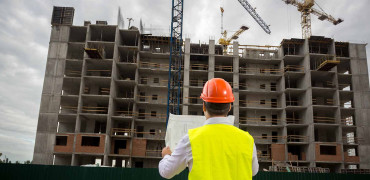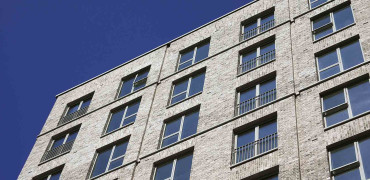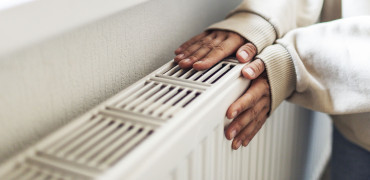The relationship between mould, damp, and tenant health has never been more pressing for housing associations (HAs). Poor living conditions not only compromise tenant wellbeing but also pose significant challenges to the sector’s sustainability commitments.
Heating systems play a pivotal role in balancing these priorities, offering HAs the opportunity to simultaneously address energy efficiency goals and improve tenant outcomes. HA Magazine’s Joe Bradbury discusses how thoughtful heating strategies can make a difference:
Mould and damp are more than just aesthetic or structural problems — they are public health concerns. Prolonged exposure to damp conditions can cause or exacerbate respiratory issues, including asthma and bronchitis.
Vulnerable groups such as children, the elderly, and those with pre-existing health conditions are particularly at risk. A 2022 report by the National Institute for Health and Care Excellence (NICE) highlighted that cold, damp homes could lead to increased hospital admissions and strain on healthcare services.
For tenants, the impact is personal and immediate: chronic health issues, mental health stress, and reduced quality of life.
For HAs, it translates to increased repair costs, regulatory scrutiny, and potential legal consequences. In an era of rising fuel poverty, where energy bills push tenants to limit heating use, addressing damp and mould requires a systemic approach focused on efficient, affordable heating.
Residential heating contributes approximately 14% of the UK’s total carbon emissions
Heating: a key to healthier homes
Heating systems are the cornerstone of a healthy living environment. When homes are adequately heated and ventilated, the risks of condensation — a primary cause of damp — are significantly reduced.
Traditional gas boilers, while prevalent, are increasingly being scrutinised for their environmental impact. New and retrofitted heating technologies can help HAs meet sustainability targets while providing better outcomes for tenants.
Solutions that deliver both efficiency and comfort
Air source and ground source heat pumps are gaining traction as viable alternatives to traditional boilers. They extract heat from the environment and although the initial installation cost can be higher, heat pumps offer long-term savings by reducing energy bills and carbon emissions.
HAs embracing heat pump technology can often access government funding and incentives, which the new government is reviewing, making the transition more financially manageable. Importantly, these systems provide consistent warmth, preventing temperature fluctuations that lead to condensation build-up.
Smart heating controls
Integrating smart thermostats and heating controls empowers tenants to optimise energy use without compromising warmth.
Systems that allow remote monitoring and zoning can prevent energy waste and reduce costs, ensuring that every room maintains a healthy temperature.
By implementing data-driven insights, HAs can monitor usage patterns to identify properties at risk of under-heating and damp issues.
Early intervention can mitigate the risk of costly repairs and health problems before they escalate.
Mechanical Ventilation with Heat Recovery (MVHR)
MVHR systems extract stale, damp air and replace it with fresh, filtered air while retaining heat energy. This approach prevents moisture build-up and maintains a steady indoor climate.
When combined with efficient heating, MVHR systems can dramatically improve air quality and tenant health.
HAs looking to reduce mould and damp complaints should consider pairing heat pumps with MVHR for a holistic, sustainable solution.
The link to sustainability targets
According to the Climate Change Committee, residential heating contributes approximately 14% of the UK’s total carbon emissions. For HAs, reducing this footprint is crucial to meeting government regulations and fulfilling environmental, social, and governance (ESG) commitments.
By investing in renewable heating technologies and robust insulation, HAs can achieve significant carbon savings. Many housing providers have already embraced retrofit programmes, improving energy performance certificates (EPC) for their stock while reducing tenant energy costs.
The Fabric First approach — where insulation and airtightness are prioritised before upgrading heating systems — ensures maximum efficiency gains.
The human and financial benefits
Effective heating solutions offer a dual advantage: safeguarding tenant health and achieving long-term financial savings. Reduced damp and mould incidents lead to lower maintenance costs and fewer legal claims.
Tenants living in warm, dry homes experience improved health and wellbeing, resulting in fewer absences from work or school and less strain on public health services.
For HAs, investing in sustainability-driven heating technologies is not just a regulatory requirement — it’s a moral imperative.
The Grenfell tragedy and subsequent inquiries into social housing conditions have underscored the importance of prioritising tenant safety and comfort.
In summary
Heating is more than a technical consideration — it’s a fundamental determinant of tenant health and a crucial element in the journey towards sustainability.
By adopting modern, efficient heating systems and promoting better ventilation and behaviour, housing associations can tackle the root causes of mould and damp while meeting climate targets. In doing so, they create healthier, safer, and more resilient homes for their communities.
Joe Bradbury is digital editor of Housing Association magazine




